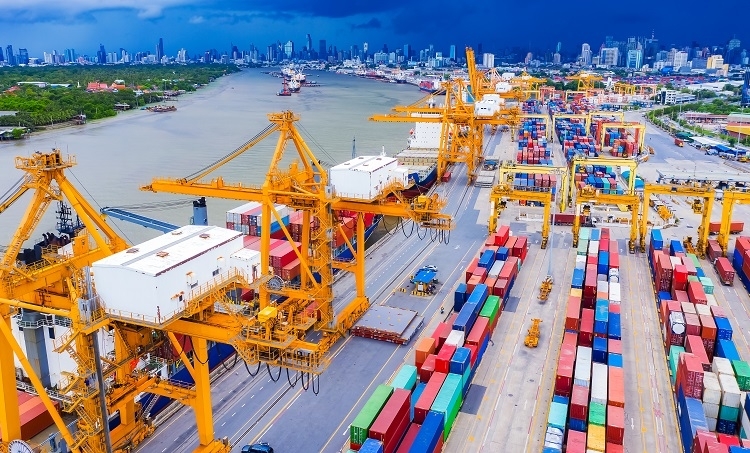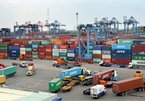 |
| Global shutdown continues to hinder export numbers-illustration photo |
Since March this year, Vietnamese-Taiwanese joint venture Huasheng Garment and Textile Co., Ltd. has seen a 50-per-cent fall in export orders from the EU, which accounted for 70 per cent of its export turnover last year.
“We are exporting to France, Belgium, Germany, and Hungary. However, we are not sure about our exports in these markets as since August, partners from these nations are cutting imports, causing a big loss to us,” said Pham Van Can, sales manager from Huasheng based in the northern province of Hung Yen. “We have had to lay off to about 500 workers, or half of our total number of employees.”
In another case, Red Lotus Trading Co., Ltd. in Hanoi has also since March found it hard to export its agricultural products to the ASEAN, Japan, South Korea, and Australia due to their reduced demand.
“Our export turnover has dropped by 70 per cent since March as these markets, which created 60 per cent of our export revenue last year, have reduced import orders,” said Tran Hai Van, director of Red Lotus. “Since March, the export price of agricultural products has also reduced.”
According to statistics from the General Statistics Office (GSO), since April, the export prices of many agricultural items globally have dropped, such as cashews (12.9 per cent), tea (13.1 per cent), and pepper (19 per cent).
In Vietnam, agro-forestry-fishery products accounted for 15.5 per cent of the economy’s total export turnover of $263.5 billion last year.
The Ministry of Industry and Trade’s fresh calculations demonstrated that the quantity of export orders in April and May of garment, textile, and footwear firms plummeted 70 per cent on-year, while new orders from June onwards have yet to be negotiated.
Meanwhile, enterprises’ efforts to shift their outlets to the domestic market are not feasible because most of them are providing goods for foreign brand names with materials used to meet the demand of non-Vietnamese people.
The Ministry of Planning and Investment (MPI) reported that the COVID-19 pandemic has and will continue to negatively affect Vietnam’s export landscape this year, because the country’s key export markets are bogged down in great difficulties with lowered demand for imported goods.
“Challenges are expected to grow strongly from now until the year’s end as Vietnam’s economic growth largely depends on exports, imports, and tourism. Among 17 leading economic and tourism partners of Vietnam (responsible for the country’s 70 per cent of trade, 90 per cent of foreign direct investment, and 80 per cent of tourism), the majority will find it hard to resume their normal trade activities in the third quarter of 2020,” said an MPI report released over a week ago.
These 17 markets are Japan (importing goods worth $20.4 billion from Vietnam last year), South Korea ($19.72 billion), Taiwan ($4.4 billion), Thailand ($5.27 billion), China ($41.4 billion), Hong Kong ($7.15 billion), Germany ($6.55 billion), Australia ($3.5 billion), India ($6.67 billion), Indonesia ($3.37 billion), the US ($61.34 billion), Singapore ($3.2 billion), Malaysia ($3.8 billion), the Netherlands ($6.88 billion), Russia ($2.67 billion), the British Virgin Islands, and Samoa. These markets occupy 72.44 per cent of Vietnam’s total export turnover last year.
The EU, in an example, is now trying to find measures to escape from difficulties and recover local demand and consumption. The 27 governments within the bloc are negotiating a proposal for €750 billion ($841 billion) to tackle the pandemic.
However, the new stimulus plan has sparked division among EU member states and it is unclear when they will manage to bridge their differences, which are mostly over how much they should borrow from capital markets, with some nations arguing the €750 billion is too much, and over how that money should be distributed and in which form.
Meanwhile, the US, India, and Russia are now the world’s biggest, third-biggest, and fourth-biggest COVID-19 hotspots, respectively. The other 14 markets are also home to thousands of infected cases, with many deaths, and are struggling to stimulate domestic demand and consumption.
According to the MPI, these markets will not be safe in the short term and may even face a second wave. Meanwhile, it will remain complex for Vietnam to take advantage of opportunities to boost export of items of high demand such as medical equipment because the country’s supporting industries remain underdeveloped.
Statistics from the GSO showed that in the first half of 2020, Vietnam’s total export turnover hit $121.2 billion, down 1.1 per cent on-year. The US was Vietnam’s largest export market ($30.3 billion, up 10.3 per cent on-year), followed by China ($19.5 billion, up 17.4 per cent on-year – thanks to a 128 per cent rise in Vietnam’s export of mobile phones and their spare parts).
Vietnam’s export turnover from other key markets fell on-year, including the EU market ($16.1 billion, down 8.8 per cent), ASEAN member markets ($11.1 billion, down 14.2 per cent), and Japan ($9.4 billion, down 2.3 per cent). Vietnam’s export turnover from South Korea touched $9.3 billion, up 2.3 per cent on-year. VIF
Nguyen Dat

Vietnam export targets still attainable under certain conditions
If Covid-19 is contained by Q2, exports will bounce back and the 7-8 percent export growth rate in 2020 will be within reach.

Prolonged Covid-19 epidemic to take toll on Vietnam export growth target in 2020
The spreading of Covid-19 epidemic in Vietnam’s major trade partners including Japan and South Korea are causing problem for export-import activities.